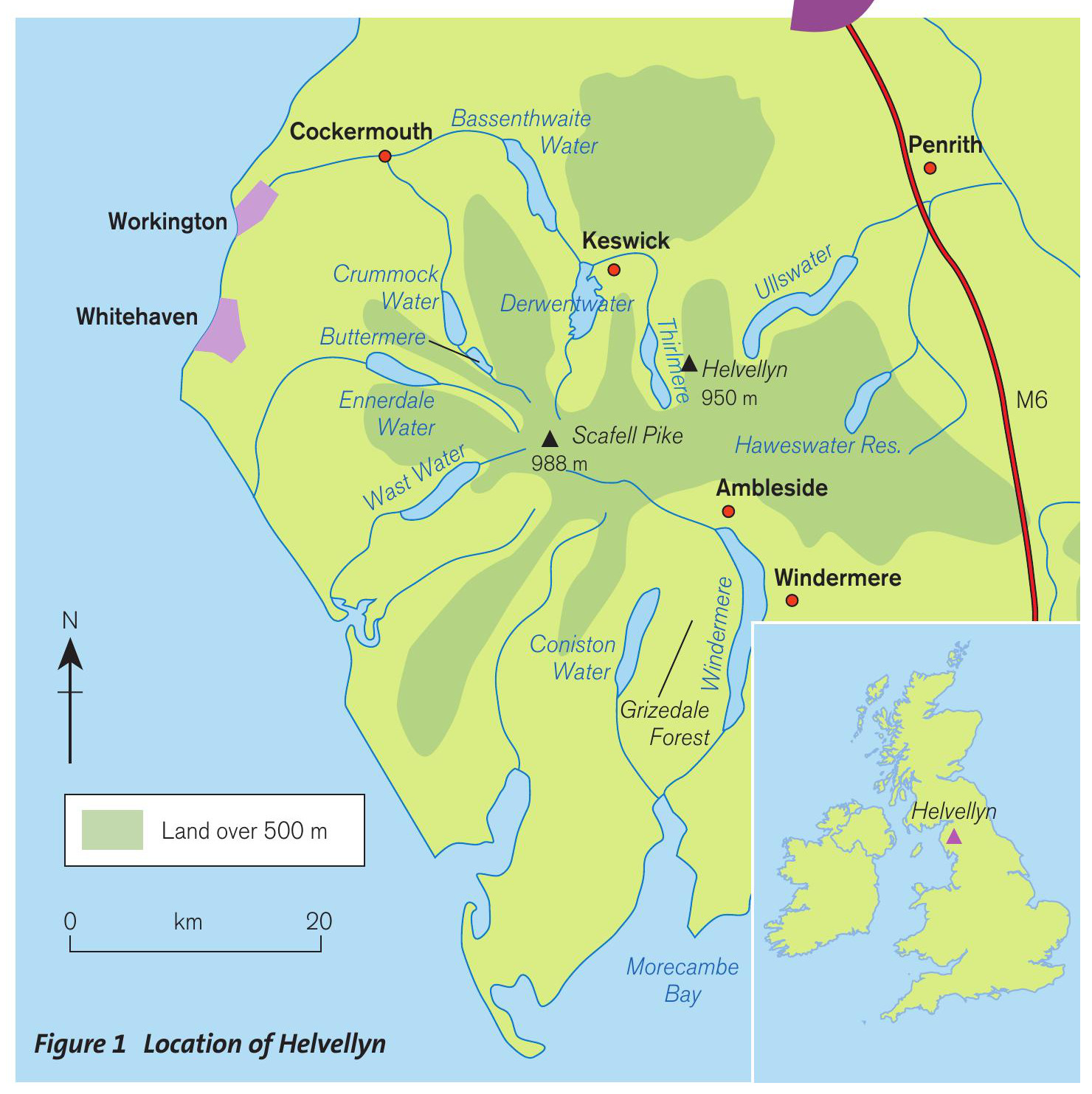
One of the most spectacular walks in the Lake District National Park is along the knife-edged ridge shown on the photograph, to the summit of Helvellyn (in the middle background). At 950 m, Helvellyn is one of the highest mountains in this National Park (Figure 1). To the east of the summit, on the right of the photograph, is Red Tarn, which lies in a great hollow in the mountainside. On the other side, to the south of the ridge, is another enormous hollow known as Nethermost Cove. The ridge itself is called Striding Edge, and walking along it is not for the faint-hearted: it is very narrow in places, with sheer sides dropping to the hollows on either side. This spectacular scenery was carved out by glaciers during the last ice age.
Red Tarn is an example of a corrie lake. A corrie is a deep armchair-shaped hollow high up in the mountains. Corries begin to form when snow accumulates in a small hollow on the mountainside. The snow is compacted and turns into ice. As more and more ice accumulates it starts to move, due to the pull of gravity (see Figure 2). This erodes and deepens the hollow as the ice freezes onto the rock, pulling it from the wall of the corrie — a process known as plucking. This action forms the steep and craggy back wall of the corrie, which you can see in the photograph.
Your organisation does not have access to this article.
Sign up today to give your students the edge they need to achieve their best grades with subject expertise
Subscribe




